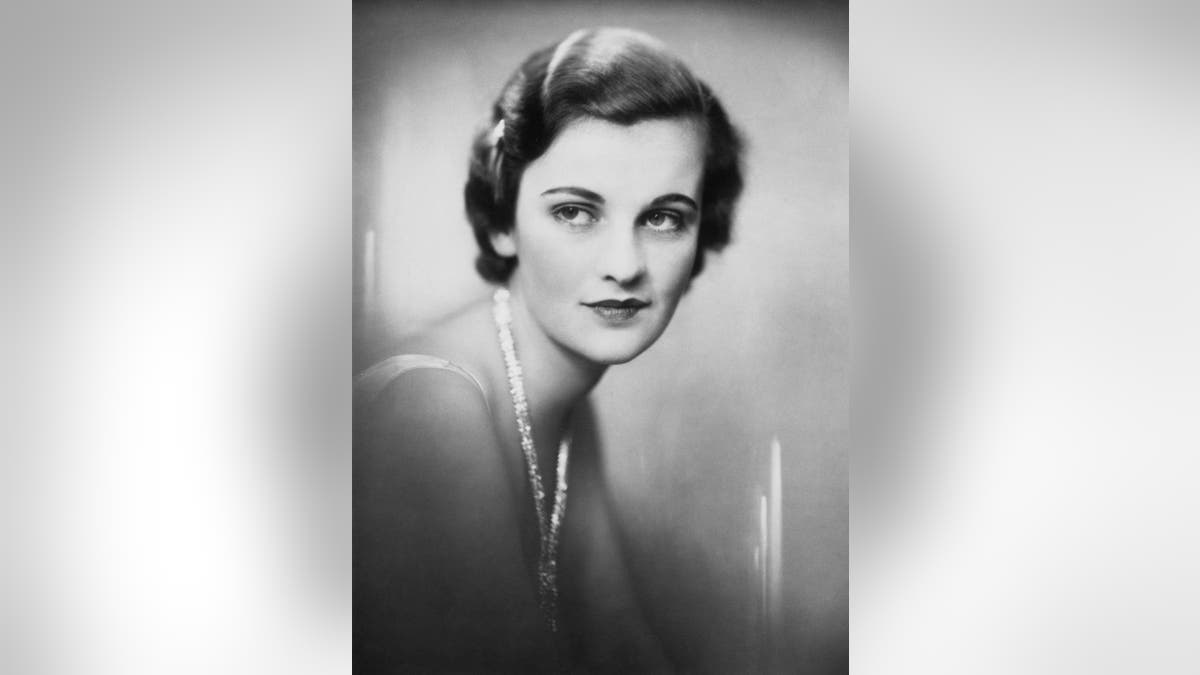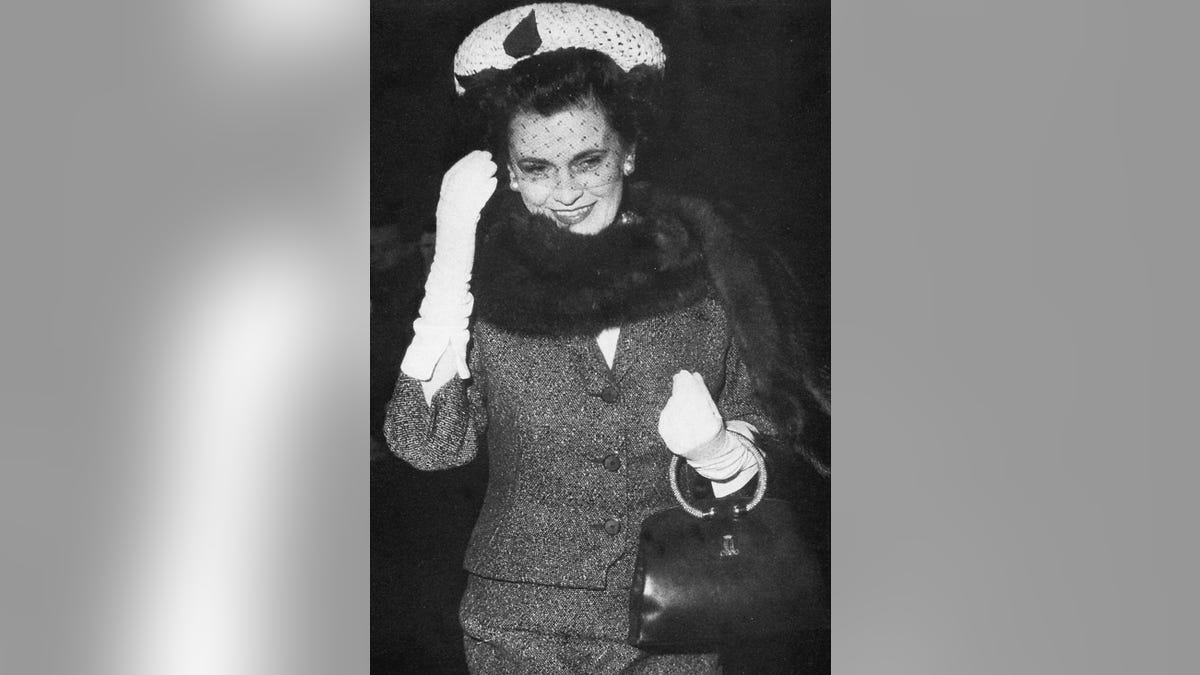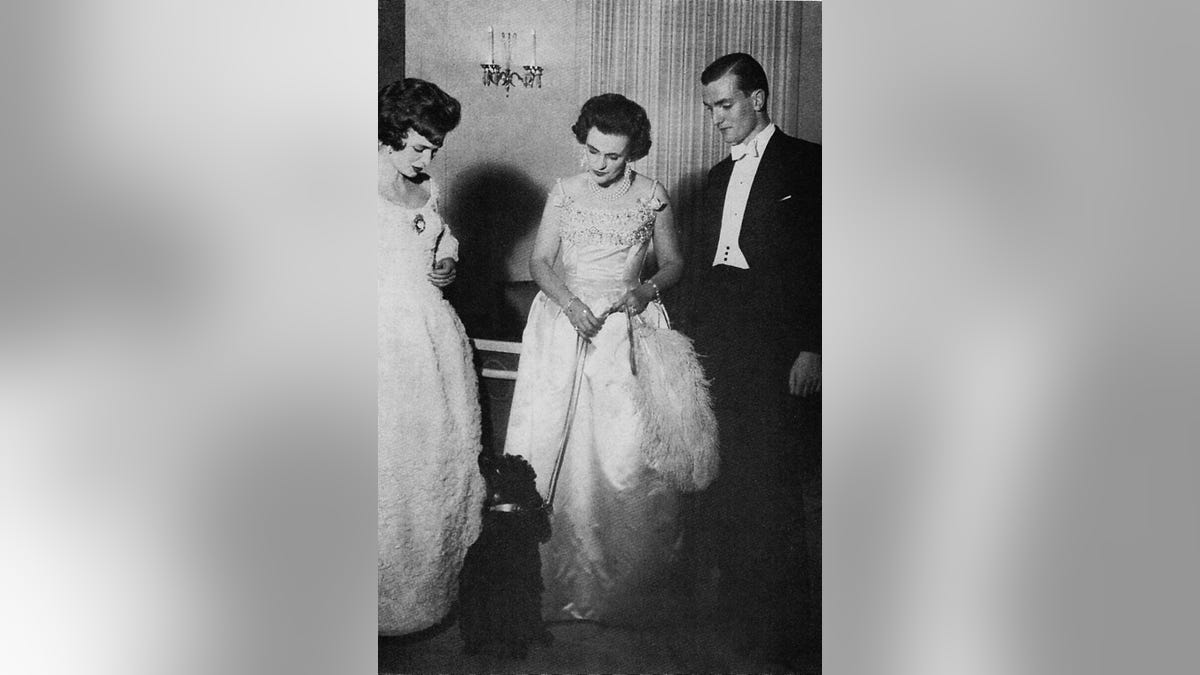Fox News Flash top entertainment headlines for Dec. 16
Fox News Flash top entertainment and celebrity headlines for Dec. 16 are here. Check out what's clicking today in entertainment.
One duchess couldn’t escape the drama that followed her for the rest of her life.
Margaret, Duchess of Argyll, is the subject of a book that was recently published this year titled “The Grit in the Pearl,” which explored how the British socialite was accused of sleeping with over 80 men behind her husband’s back, and what really happened to her after the allegations stunned a nation.
Margaret, nicknamed “the dirty duchess” by the press, died in 1993 at age 80 in a nursing home after a long illness. Her story will be the subject of Season 2 of “A Very English Scandal,” which stars Hugh Grant and Ben Whishaw.
Author Lyndsy Spence felt the aftermath of the #MeToo and Time’s Up movements made it a perfect time to address the misconceptions surrounding Margaret.

English socialite Margaret Whigham (1912 - 1993), circa 1930. (Photo by Hulton Archive/Getty Images)
GRACE KELLY'S ROYAL BRIDESMAID WOUND UP HOMELESS, BATTLED MENTAL ILLNESS
“A lot of her friends are still alive,” Spence told Fox News. “She had a lot of younger friends. I think they were more accepting of her. And her great-granddaughter spoke to me for a bit and she was very encouraging about the project.”
Spence also shared she had access to unpublished letters that unveiled shocking secrets about Margaret’s rise and fall in the spotlight.
Margaret, the daughter of a textile millionaire, was married to American amateur golfer Charles Sweeney at the age of 20, the New York Times reported. However, it was her second marriage to British aristocrat Ian Douglas Campbell, the Duke of Argyll and Queen Elizabeth II’s cousin, that earned her notoriety.
The couple tied the knot in 1951. However, Spence said the union was more like a nightmare than a fairytale romance.
MEGHAN MARKLE WON'T EVER BE LIKE 'BITTER' WALLIS SIMPSON, SAYS PRINCESS DIANA'S BIOGRAPHER

Margaret Campbell, formerly Sweeny, née Whigham (1912 - 1993), now Duchess of Argyll, and Ian Douglas Campbell, 11th Duke of Argyll (1903 - 1973), after their wedding at Caxton Hall in London, 23rd March 1951. (Photo by Keystone/Hulton Archive/Getty Images)
“Other people could see him coming and say, ‘He’s an opportunist, stay away from him,’” she alleged. “But Margaret wouldn’t listen to any criticism about him or any forewarnings. She thought people must be jealous or that they don’t understand him. And he really lured her. Once they were married, he completely changed. He was nasty. He was abusive. He had to get what he wanted.”
Spence claimed that in hopes of saving their relationship, Margaret didn’t oppose to having an open marriage.
“Even today, for that circle of people, divorce is still scandalous,” said Spence. “And I think Margaret felt, ‘Well, we would have an open marriage and we could go our own ways.’ He also had mistresses… but he was a bit more secretive about it."
However, Spence pointed out Margaret never realized that her husband was secretly following her and “collecting evidence of adultery” that he would ultimately use against her.

Day one of Argyll versus Argyll. (Photo courtesy of the author)
The marriage collapsed in 1963.
“She stopped giving him money,” Spence alleged. “He was a gambler and he was addicted to prescription drugs and was an alcoholic. So he had this dark side to him. She was willing to give him help if he stopped drinking. But he didn’t care about that. He just needed money to pay off his creditors or he would go to prison.”
“When she decided that she wasn’t going to give him any more money, he thought, ‘Well, I have no use for you anymore. I need to find another rich woman,’” Spence claimed. “And that’s when he started to build his divorce petition.”
Ian broke into Margaret’s desk and found explicit Polaroids of his estranged wife with other men, UK’s Daily Mail reported. One of the most famous images from the batch is that of “The Headless Man,” which reportedly depicted Margaret naked with her signature hairstyle and strands of pearls with a customized clasp, performing “a sex act” on a man whose head is out of the shot.

1930: The Duchess of Argyll at a dress rehearsal for the Jewels of Empire Ball at Brook House in Park Lane. (Central Press/Getty Images)
CROWN PRINCESS METTE-MARIT OF NORWAY SAYS SHE REGRETS HER TIES TO JEFFREY EPSTEIN
The mystery man was rumored to have been either Hollywood actor Douglas Fairbanks Jr., former Nazi member Sigismund von Braun or British prime minister Winston Churchill’s son-in-law, The Telegraph reported. The outlet also shared Margaret was accused of bedding two government ministers and three members of the royal family.
“She was taking those kinds of photographs as early as 1948-1949,” said Spence. “During the time she went to New York and was able to buy one of the first Polaroid cameras that were available on the market. But … it was kept private. And once Ian finds it, he felt he could frame her for all of these affairs. [However], he had a massive collection of explicit postcards and photographs, so he certainly tampered with the evidence.”
Spence claimed that Margaret’s shocking photographs were taken in the late ‘40s — before her marriage to Ian.
“She never threw anything away,” claimed Spence. “I guess that was her ego. She liked to chronicle everything and keep a note of everything… In terms of keeping the photographs, I guess it played her ego.”
PRINCE WILLIAM FEELS ‘STRANGE’ NOT HAVING PRINCE HARRY AROUND FOR CHRISTMAS AT SANDRINGHAM: REPORT

Margaret, Duchess of Argyll, became known as the "dirty duchess" after her alleged infidelity came to light. (Photo courtesy of the author's collection.)
CHAOS REIGNS: BRITISH MONARCHY STAGGERS FROM ONE SCANDAL TO ANOTHER WITH NO END IN SIGHT
According to Spence, Ian was able to obtain the photographs with the help of a locksmith by breaking into her London home while she was away in New York.
“He was just ransacking, looking for evidence, looking for her diaries, letters — anything to help him build a case,” she said. “He pulled the bookcase away and there were her Polaroid photos stashed behind it. I suspect she must have forgotten about them.”
According to Spence, the judge who presided over the divorce case was a distant cousin of Ian’s and a no-nonsense Catholic. He branded the duchess as “wholly immoral and completely promiscuous,” the New York Times shared.
“He despised anything to do with adultery,” Spence pointed out. “When it came to defending herself, Margaret really didn’t have a leg to stand on.”

Margaret, Duchess of Argyll, couldn't escape the scandal.
KACEY MUSGRAVES' HIGH-FIVE WITH PRINCE HARRY GOT HER IN TROUBLE: 'I DIDN'T KNOW'
The Daily Mail pointed out Ian attempted to have Margaret institutionalized, insisting a 1943 fall caused her brain damage and by law, a man could divorce his wife on the grounds of insanity. However, Ian wasn’t able to obtain the necessary documents for Margaret’s committal.
The case and a subsequent libel action led to Margaret’s financial downfall, the New York Times shared. In 1971, she opened her home to tourists in hopes of earning money. Seven years later, she was forced to move into a hotel. In 1990, she was evicted for not paying her bill.
“It impacted her for the rest of her life,” said Spence. “She was called horrible names and her daughter stopped speaking to her… it just seemed like the scandal followed her. She ended up with no money. She had people who weren’t looking after her best interests and money was stolen. Then she was convinced to invest in other secrets.”
“If you’ve been treated that way, you wouldn’t recover,” Spence continued. “But I also admire that she tried to carry on. She tried to throw grand parties and dress the part, but society wasn’t accepting of her. She… [was] clinging on to the past… I think she was a very sad, lonely character in the end. It’s not the sort of ending she would have imagined for herself."

Author Lyndsy Spence hopes her new book with shine a new light on Margaret, Duchess of Argyll. (Photo courtesy of the author's collection)
Spence claimed that the photographs, along with the divorce files, are now locked away in an archive in Edinburgh. The identity of “The Headless Man” has never been revealed.
Despite the public scandal and ruthless publicity, Spence hopes Margaret will be finally viewed in a different light.
“I think a lot of women [today] will empathize with what Margaret went through,” she said. “When you think of a similar case today, and how the media covers it, nothing’s really changed.”






















